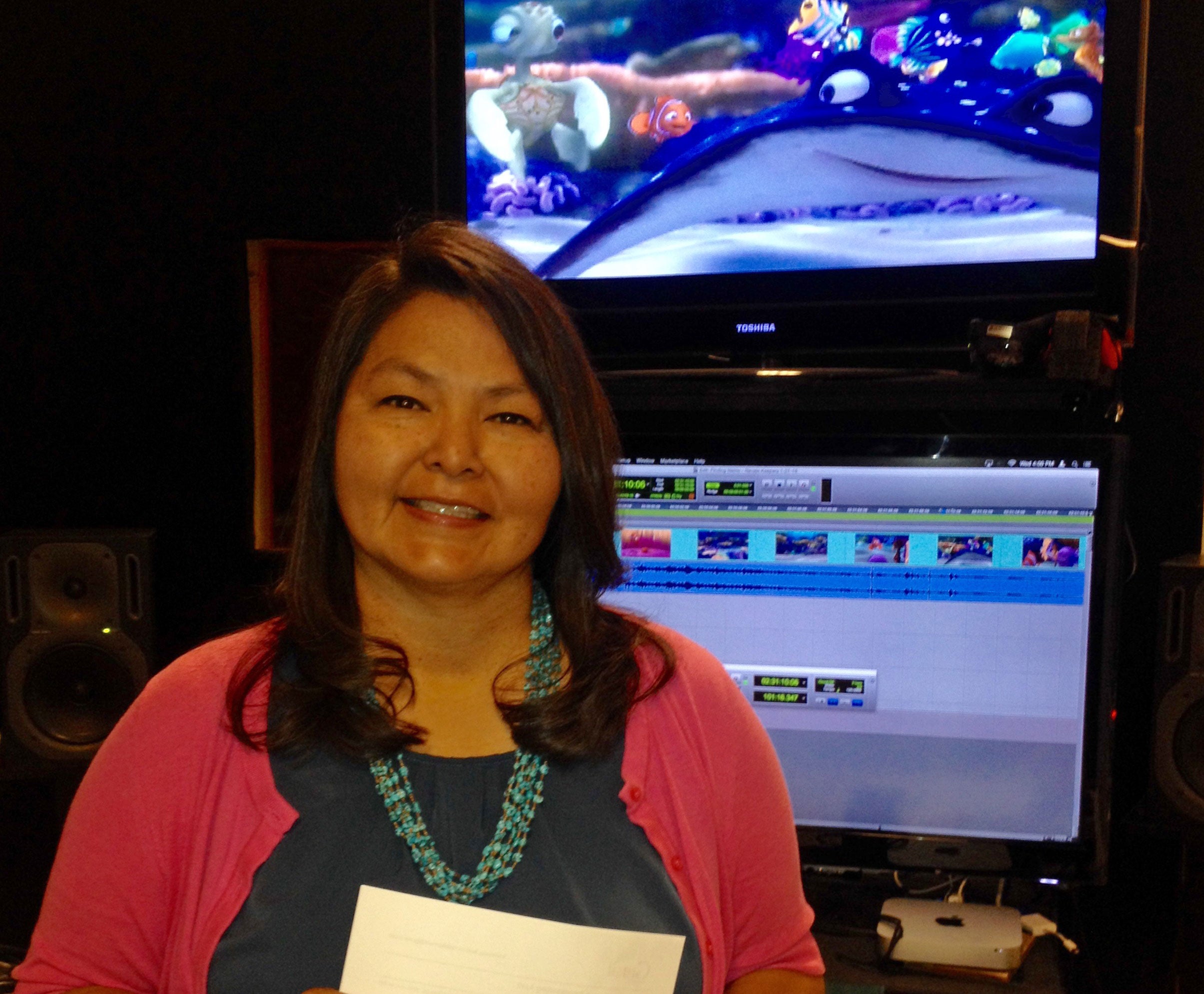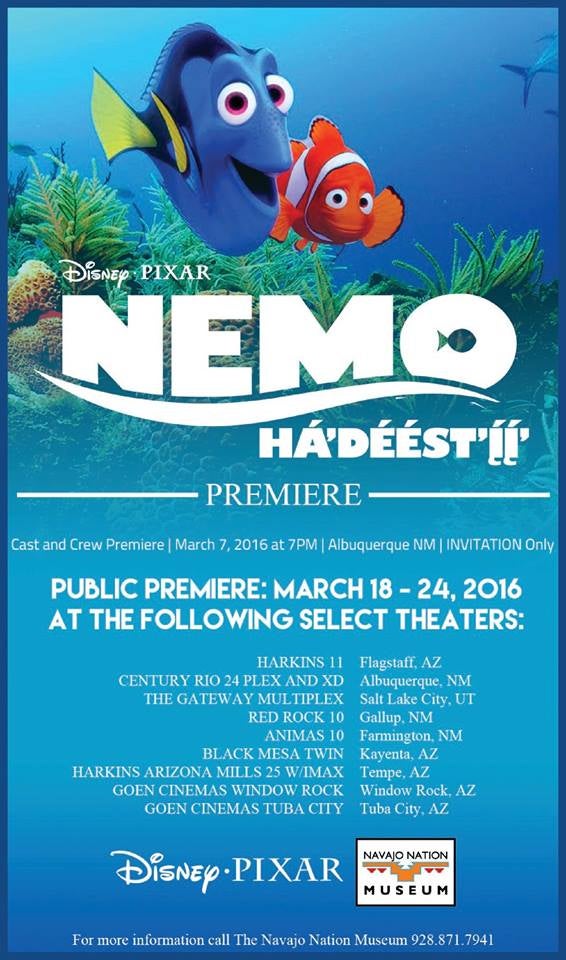The Navajo language is dying, and Manuelito Wheeler wants to change that.
Armed only with his heritage and the love of his people, Wheeler (pictured above) is taking steps to protect the Navajos’ history and culture — and he is receiving help from an unlikely place: Hollywood.
In an effort to preserve the language, Wheeler has teamed up with Disney to dub the films “Finding Nemo” and the original “Star Wars” with Navajo voice actors. The Arizona State University alumnus will speak about his journey during a lecture at the Heard Museum on March 24.
After graduating with a bachelor’s in fine arts from ASU, Wheeler was hired by the Navajo Nation Museum in Window Rock, Arizona. He got his foot in the door as a carpenter’s assistant and, over the course of eight years, eventually became the museum's director, fostering the idea of creating a museum that reflected on the Navajo people in a positive way. However, he knew to create a truly lasting impact, a large project would be necessary — one that would reach both Natives and non-Natives alike.
“I’m trying to have projects out there that automatically change people’s perception of who we are,” Wheeler said. “To go even deeper, I’m trying to do projects that help us, the Navajo people, understand who we are and what we’re capable of.”
Wheeler and his wife, Jennifer, had discussed the idea of dubbing a film in Navajo for 15 years. In the mid-1990s, he purchased a "Star Wars" script off Amazon and asked his wife — an ASU alum who is fluent in Navajo and teaches a course at ASU — to translate the first 10 pages.
“I wasn’t expecting to get the translation back for a few days,” Wheeler said. “But she had it done in like 10 minutes. That's when the lightbulb went off and I knew it was entirely doable.”
ASU alum Jennifer Wheeler in the "Finding Nemo" dubbing studio, where she helped translate the movie.
Wheeler then reached out to Lucasfilm (before the company sold the franchise to Disney) to dub "Star Wars" into Navajo. The 2013 achievement received notice in the press; still, Wheeler looked at the movie as the first of many positive steps towards building an even bigger picture.
Through his partnership with Lucasfilm, Wheeler met Rick Dempsey, vice president of Disney Animation.
“(Wheeler) followed me into my office,” Dempsey said. “(He) wanted to do this with one of our animated films.”
After getting approval from John Lasseter, chief creative officer for Pixar Animation, and the Disney studio, the “Finding Nemo” project slowly started to move forward.
Creating a Navajo-dubbed version of that movie, from beginning to end, took roughly a year and a half, Dempsey said.
The final version was released last week and premiered at a screening in Albuquerque, New Mexico.
Dubbing the film came with expected challenges, such as the technical aspects of voice-overs — like matching the characters’ lips to the voices, Wheeler said.
But a unique hurdle the team faced was the Navajo language's lack of words that describe the ocean, especially problematic for a film that takes place almost entirely in the sea. So the team used Navajo words that traditionally describe rivers instead.
“We’re showing our own Navajo people that our language is so adaptable, that it can be used in any situation that you want to put it in, and therefore it’s relevant,” Wheeler said. “And once it’s relevant, it makes people want to learn and understand it.”
“I just think it’s really exciting that it’s not just one movie, it’s now going to be two, which means the ball can keep rolling,” said Carrie Gillon, assistant professor of linguistics in ASU’s Department of English. “… The more prestigious Navajo appears to be to the people of the Nation, the more it’ll be used. So this is just one way of making the prestige slightly higher.”
Wheeler will speak at the spring 2016 “Simon Ortiz and Labriola Center Lecture on Indigenous Land, Culture, and Community” at 7 p.m. Thursday, March 24, at the Heard Museum in Phoenix. The lecture is free and open to the public. For more information, visit asuevents.asu.edu.
Top photo by Don James
More Arts, humanities and education

ASU workshop trains educators, professionals from marginalized communities in disaster science
As devastating as hurricanes can be to anyone caught in their paths, they strike marginalized communities even harder.To address this issue, a fund named for a former Arizona State University…

ASU’s Humanities Institute announces 2024 book award winner
Arizona State University’s Humanities Institute (HI) has announced “The Long Land War: The Global Struggle for Occupancy Rights” (Yale University Press, 2022) by Jo Guldi as the 2024…

Retired admiral who spent decades in public service pursuing a degree in social work at ASU
Editor’s note: This story is part of coverage of ASU’s annual Salute to Service.Cari Thomas wore the uniform of the U.S. Coast Guard for 36 years, protecting and saving lives, serving on ships and…


